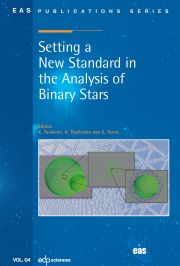No CrossRef data available.
Article contents
Submillimetre cosmology at high angular resolution
Published online by Cambridge University Press: 24 December 2009
Abstract
Over the last decade observations at submillimetre (submm) wavelengths, withtheir unique ability to trace molecular gas and dust, have attained a centralrole in our exploration of nearby as well as distant galaxies. Even so, due tothe limited sensitivity and angular resolution of current submm single-dishtelescopes only the most luminous objects have been uncovered at high redshifts, withinterferometric follow-up observations succeeding in resolving the dust and gasreservoirs at ~0.3-1'' resolution in only a few cases. The comingyears will witness a drastic improvement in the current situation, thanks tothe arrival of a new suite of powerful submm telescopes (single-dishand interferometers) with an order of magnitude improvement in sensitivity andresolution. In this overview I outline some of the major scientificadvances that we expect to make with these ground-breaking facilities.
Information
- Type
- Research Article
- Information
- Copyright
- © EAS, EDP Sciences, 2010

